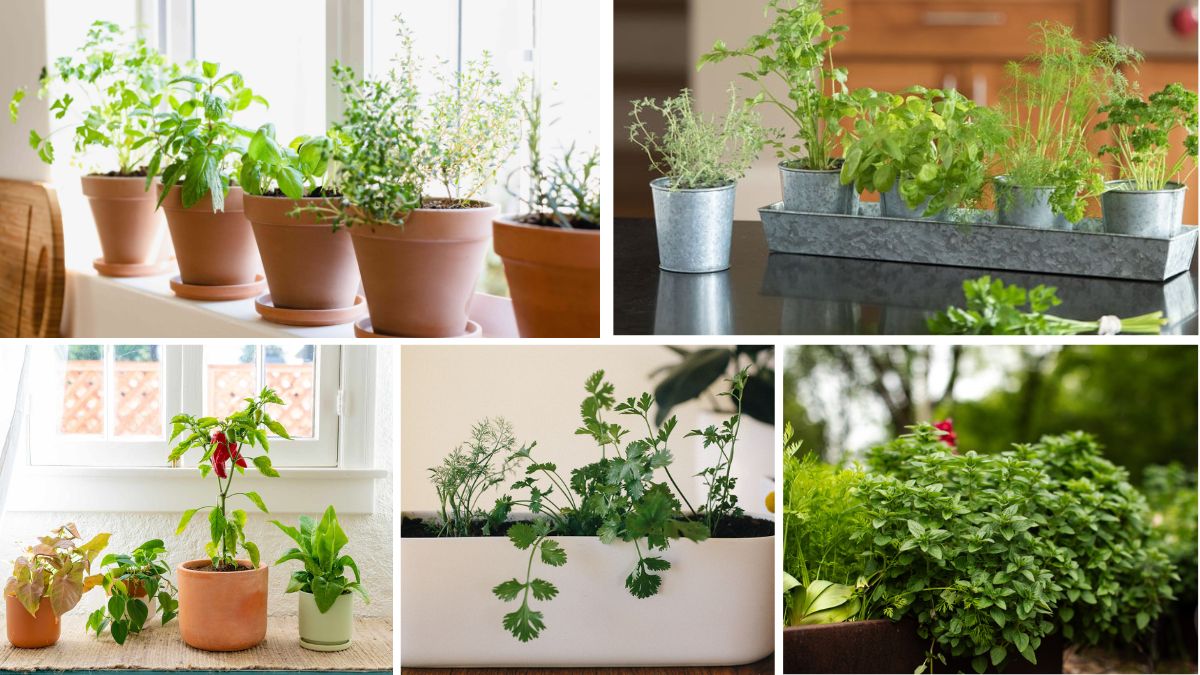Indoor gardening has become a favorite trend for plant lovers, urban dwellers, and culinary enthusiasts alike. One of the most rewarding aspects of growing plants indoors is cultivating edible herbs. They not only provide a fresh and organic supply for your kitchen but also fill your home with delightful fragrances and vibrant greenery. The good news is that many herbs thrive indoors, requiring minimal space and care while producing flavorful leaves you can harvest year-round.
In this guide, we’ll explore eight easy-to-grow edible herbs perfect for indoor gardens, along with tips on planting, care, and harvesting for the best results.
1. Basil
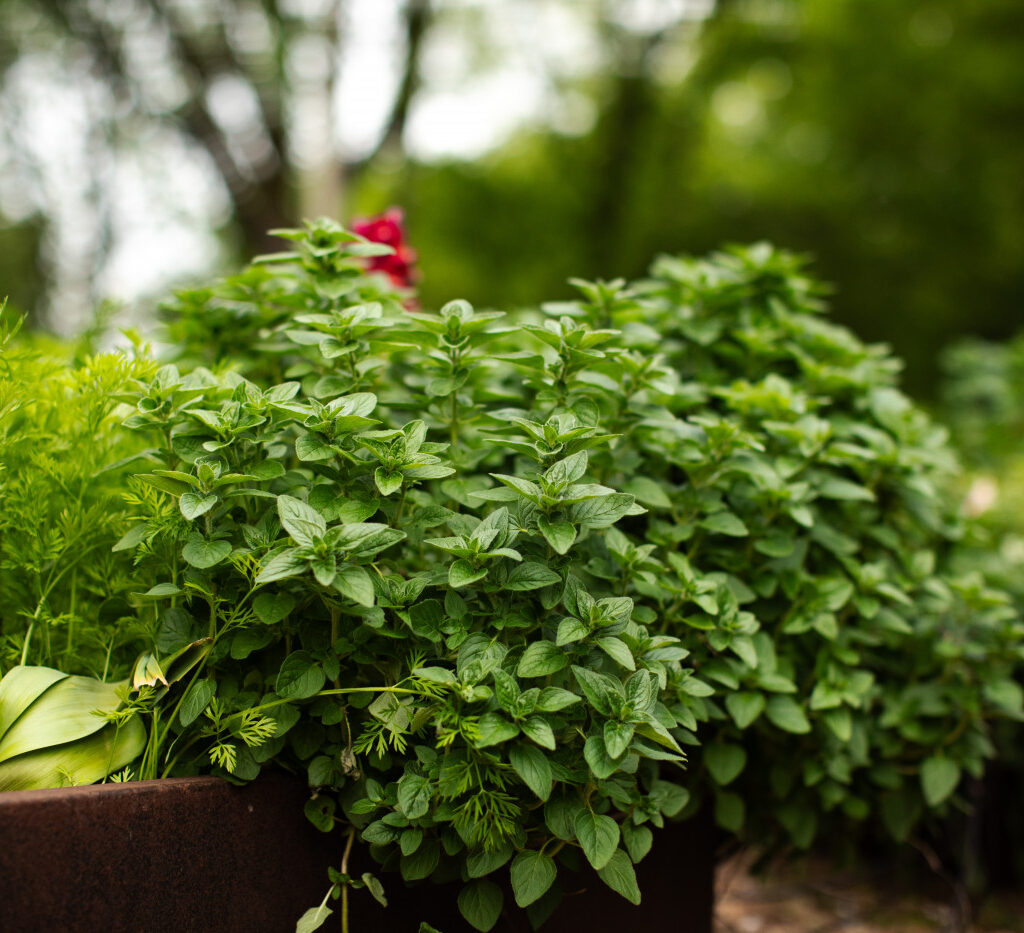
Basil is one of the most popular and versatile culinary herbs, widely used in Italian, Thai, and Mediterranean cuisines. Its fresh leaves can enhance pasta, salads, sauces, and even drinks. Basil thrives indoors as long as it receives plenty of sunlight—at least 6–8 hours per day.
Growing Tips:
- Use a well-draining potting mix and place your basil near a sunny windowsill.
- Keep the soil consistently moist but not waterlogged.
- Pinch off flower buds to encourage more leaf growth.
- Harvest leaves regularly to stimulate new shoots.
Why It’s Great Indoors:
Basil grows quickly, responds well to pruning, and adds a fresh aroma to your kitchen.
2. Mint
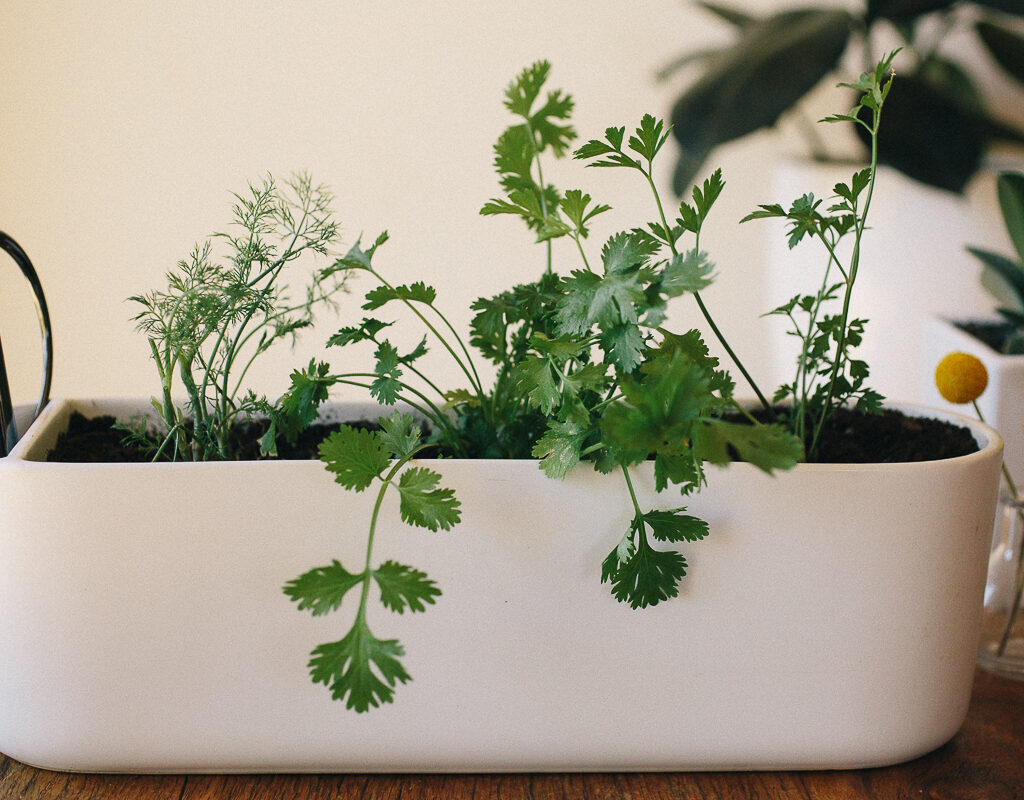
Mint is a hardy, fast-growing herb that comes in many varieties like spearmint, peppermint, and chocolate mint. It’s perfect for teas, desserts, chutneys, and savory dishes.
Growing Tips:
- Mint prefers indirect sunlight and can tolerate partial shade.
- Keep the soil consistently damp but avoid water stagnation.
- Grow mint in its own pot to prevent it from overtaking other plants.
- Snip stems regularly to prevent leggy growth.
Why It’s Great Indoors:
Mint’s refreshing aroma doubles as a natural air freshener, and it’s nearly foolproof to grow.
3. Parsley
Parsley is a biennial herb often used as a garnish or seasoning in soups, stews, and salads. It’s rich in vitamins A, C, and K, making it a nutritious addition to your meals.
Growing Tips:
- Parsley prefers bright, indirect light but can tolerate lower light conditions.
- Start from seeds or transplant seedlings into a medium-sized pot.
- Keep the soil evenly moist and avoid letting it dry out.
- Harvest the outer leaves first to allow the plant to keep producing.
Why It’s Great Indoors:
It’s low-maintenance, produces fresh greens year-round, and adds a mild yet distinct flavor to dishes.
4. Chives
Chives belong to the onion family and bring a mild, onion-like flavor to your cooking. They work well in omelets, soups, salads, and baked potatoes.
Growing Tips:
- Chives do well in bright light but can adapt to less sunny areas.
- Use a well-draining soil mix and water when the topsoil feels dry.
- Trim the leaves close to the base to encourage new growth.
- Divide the clump every few months for continuous harvest.
Why It’s Great Indoors:
Chives grow back quickly after cutting and are almost impossible to kill, making them perfect for beginners.
5. Cilantro (Coriander)
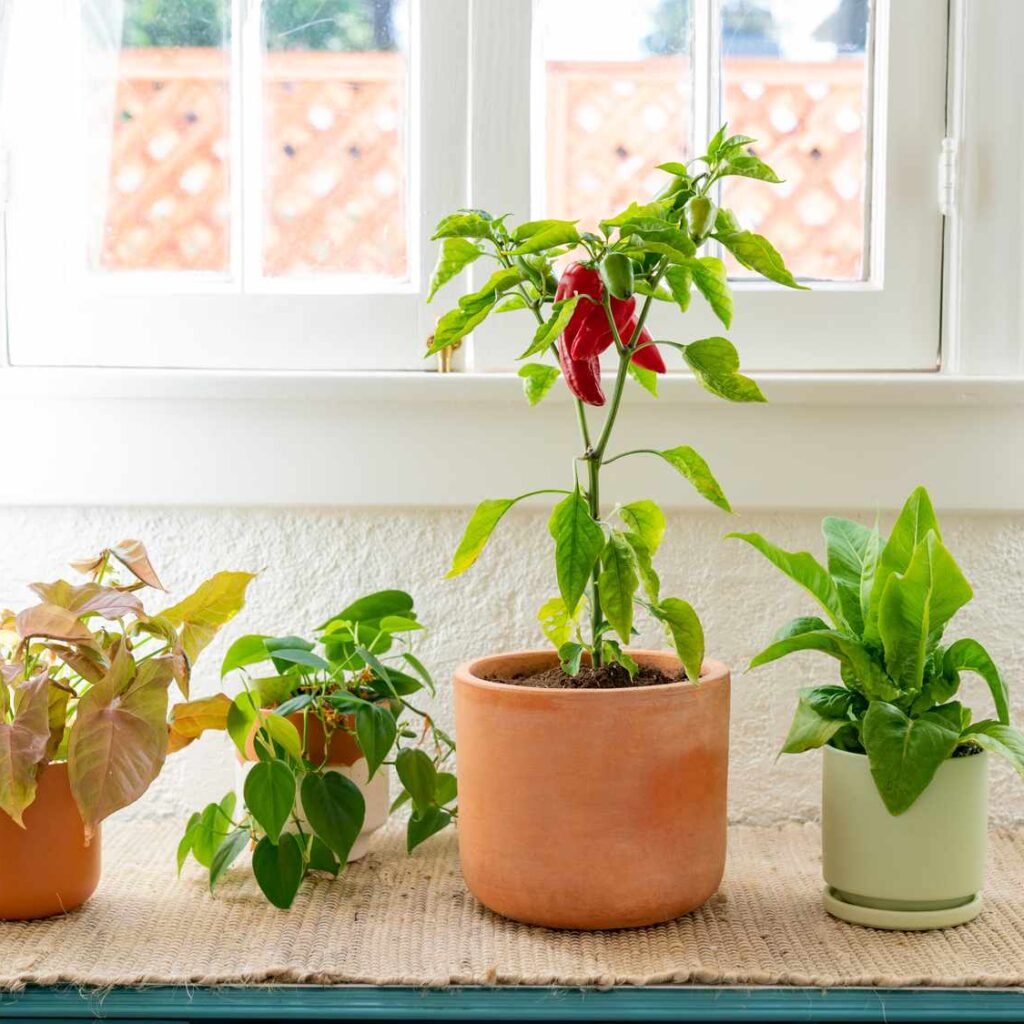
Cilantro is widely used in Asian, Mexican, and Middle Eastern dishes. Both its leaves (cilantro) and seeds (coriander) are edible, making it a dual-purpose plant.
Growing Tips:
- Cilantro prefers cooler indoor temperatures and bright light.
- Plant seeds directly in the pot you intend to keep them in, as cilantro doesn’t transplant well.
- Water regularly to keep the soil moist but avoid waterlogging.
- Harvest leaves when they are young for the best flavor.
Why It’s Great Indoors:
You can grow fresh cilantro year-round without worrying about it bolting in hot outdoor weather.
6. Rosemary
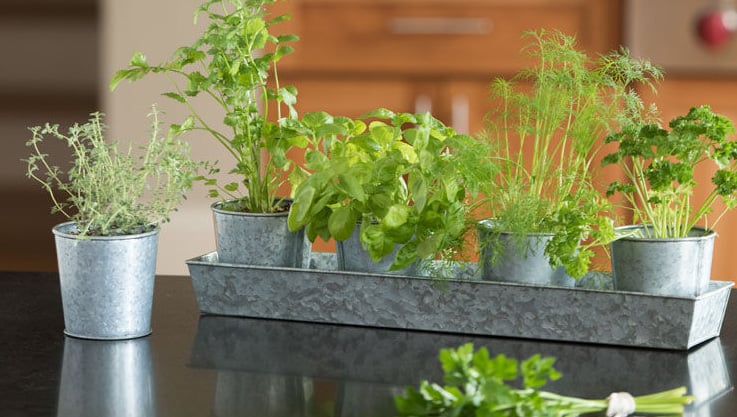
Rosemary is a fragrant, woody herb used in roasted meats, bread, soups, and herbal teas. It’s also a beautiful plant that can double as decor.
Growing Tips:
- Rosemary thrives in direct sunlight—at least 6 hours a day.
- Use sandy, well-draining soil and let it dry slightly between waterings.
- Avoid overwatering, as rosemary is prone to root rot.
- Prune regularly to maintain shape and encourage new growth.
Why It’s Great Indoors:
It’s drought-tolerant, long-lasting, and fills your kitchen with a refreshing pine-like aroma.
7. Thyme
Thyme is a low-growing herb with small, aromatic leaves that add depth to meat, poultry, and vegetable dishes. It’s also great in herbal teas.
Growing Tips:
- Thyme loves full sunlight but can tolerate partial sun indoors.
- Plant in a well-draining mix and avoid soggy soil.
- Water sparingly—thyme prefers slightly dry conditions.
- Trim stems regularly to encourage dense growth.
Why It’s Great Indoors:
It’s resilient, compact, and can thrive in the same pot for years.
8. Oregano
Oregano is a staple in Italian, Greek, and Spanish cooking. Fresh oregano leaves have a more robust flavor than dried ones, making them a great addition to homemade pizza or pasta.
Growing Tips:
- Place oregano in a sunny spot with at least 6 hours of direct sunlight.
- Use well-draining soil and allow the topsoil to dry out between waterings.
- Pinch off tips regularly to encourage bushy growth.
- Avoid over-fertilizing, as it can dilute the flavor.
Why It’s Great Indoors:
It’s low-maintenance, hardy, and perfect for adding authentic Mediterranean flavor to your dishes.
General Indoor Herb Growing Tips
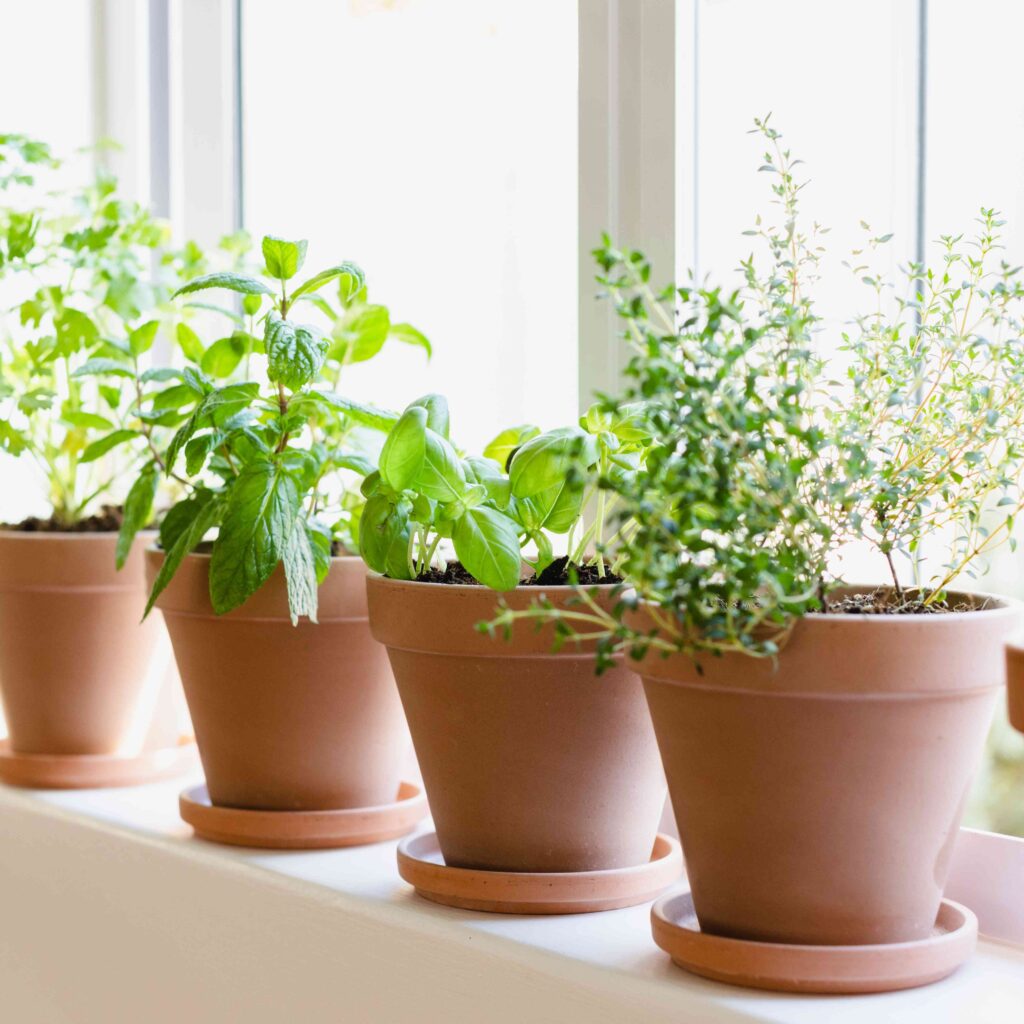
While each herb has specific needs, these general tips will help ensure success:
- Choose the Right Containers: Use pots with drainage holes to prevent root rot.
- Ensure Proper Lighting: Most herbs prefer bright, direct sunlight. If natural light is limited, consider using grow lights.
- Use Quality Potting Mix: Avoid garden soil; choose a light, well-draining mix suitable for potted plants.
- Water Wisely: Overwatering is a common mistake. Check the soil moisture before watering.
- Harvest Regularly: Frequent harvesting encourages plants to produce more leaves.
- Rotate Pots: Turn your pots occasionally to ensure even light exposure.
Conclusion
Growing edible herbs indoors is a simple, cost-effective, and satisfying way to keep your kitchen stocked with fresh, flavorful ingredients all year long. Whether you’re in a city apartment or a suburban home, herbs like basil, mint, parsley, chives, cilantro, rosemary, thyme, and oregano will thrive with minimal care. Not only will they enhance your cooking, but they’ll also add beauty and fragrance to your indoor space.
Start with a few favorites, give them proper light and care, and you’ll soon have your very own lush indoor herb garden.
